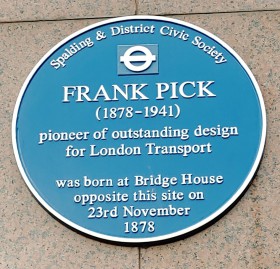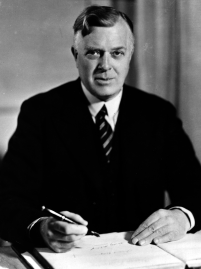Frank Pick 1878-1941, Chief Executive, London Passenger Transport Board
Frank Pick, was the eldest of five children born to Congregationalist draper, Francis and his wife Fanny on 23rd November 1878 at now demolished, Bridge House, 26/27 Bridge Street.
His legacy is the enduring image of the London Underground, including the famous map tube map that he commissioned, the red and
white signs, the distinctive Johnston sans serif typeface in use today, and dozens of classic 1930s art-deco buildings.
The plaque was unveiled on 15 June 2013 by Sir Peter Hendy, Commissioner for Transport in London, who said Frank Pick did more to
create modern London than even Sir Christopher Wren.
The plaque was commissioned after Society member Howard Johnson put his name forward as one of deserving a plaque.


